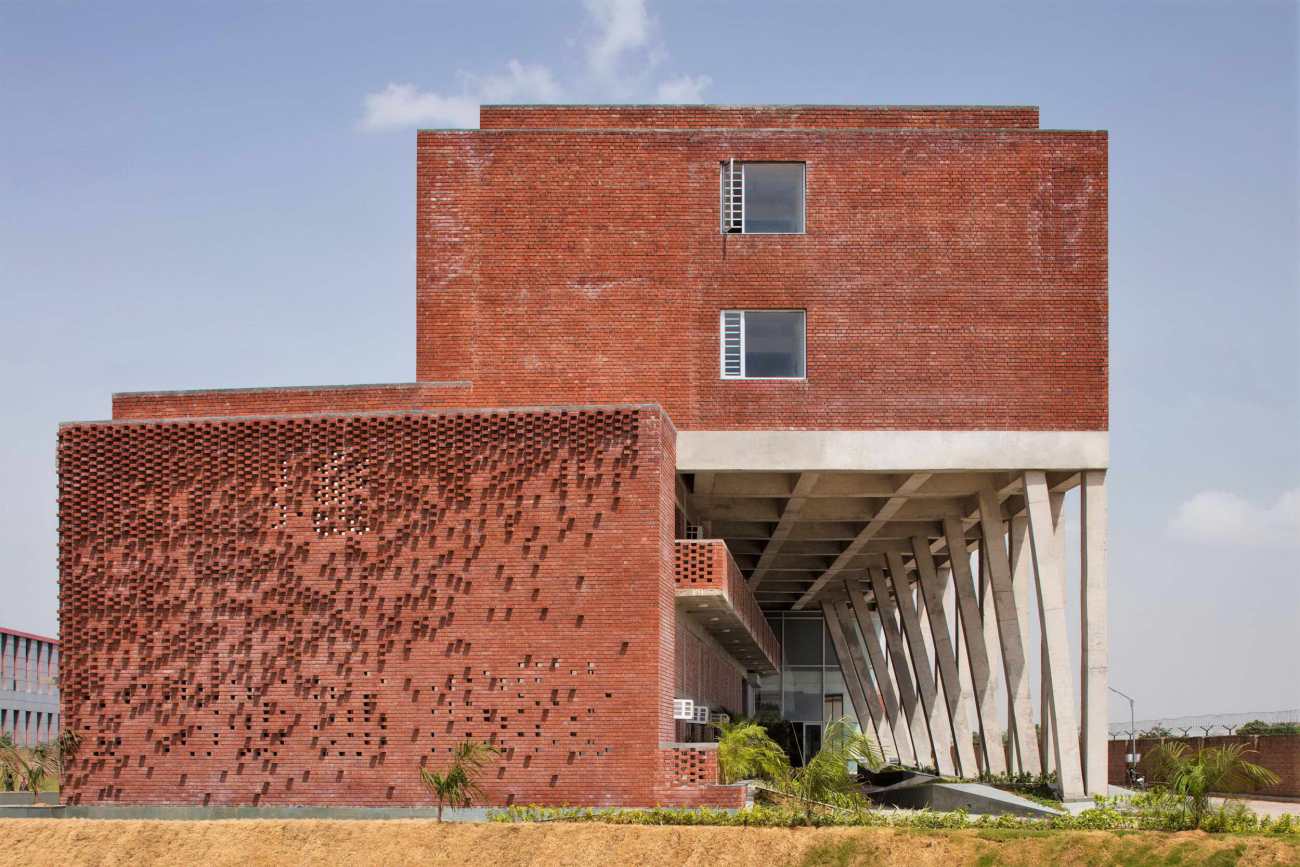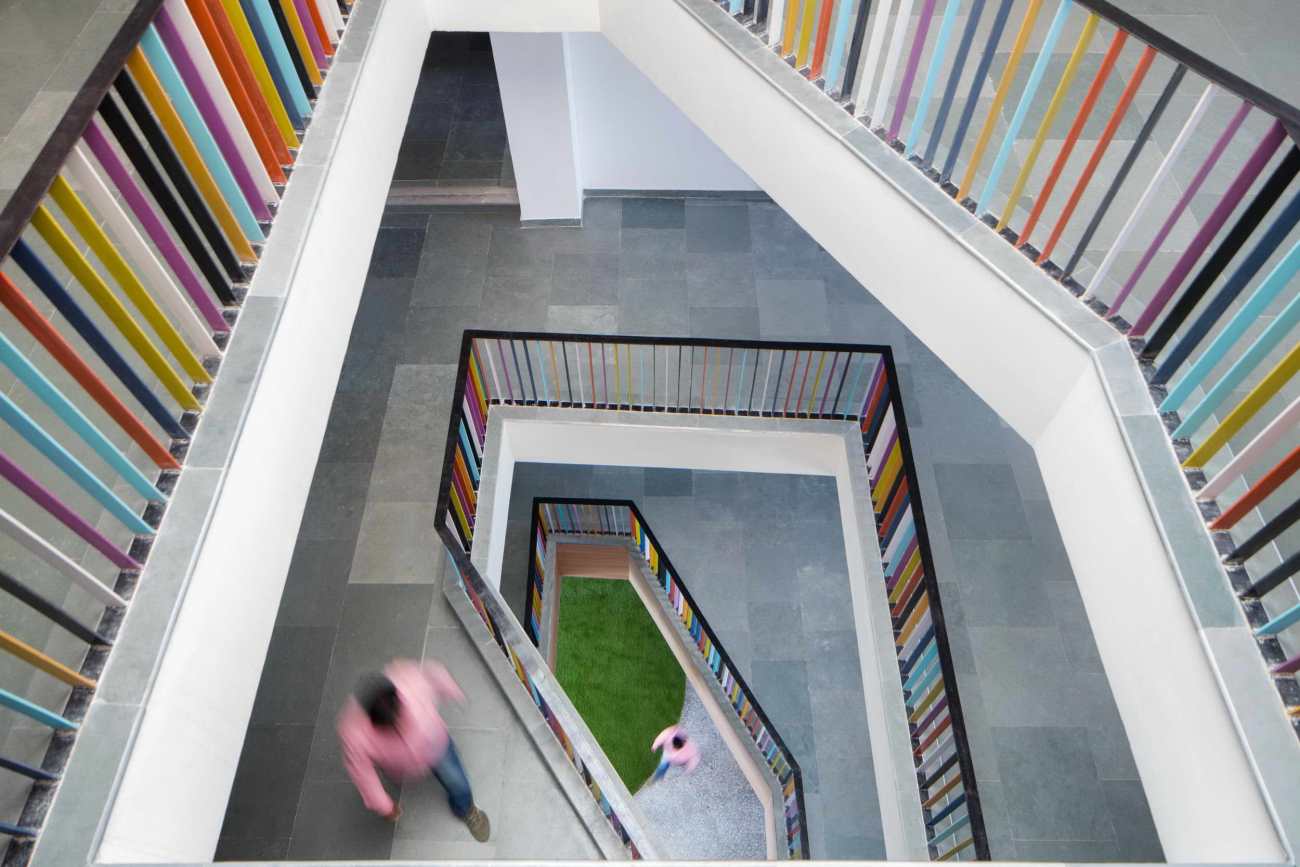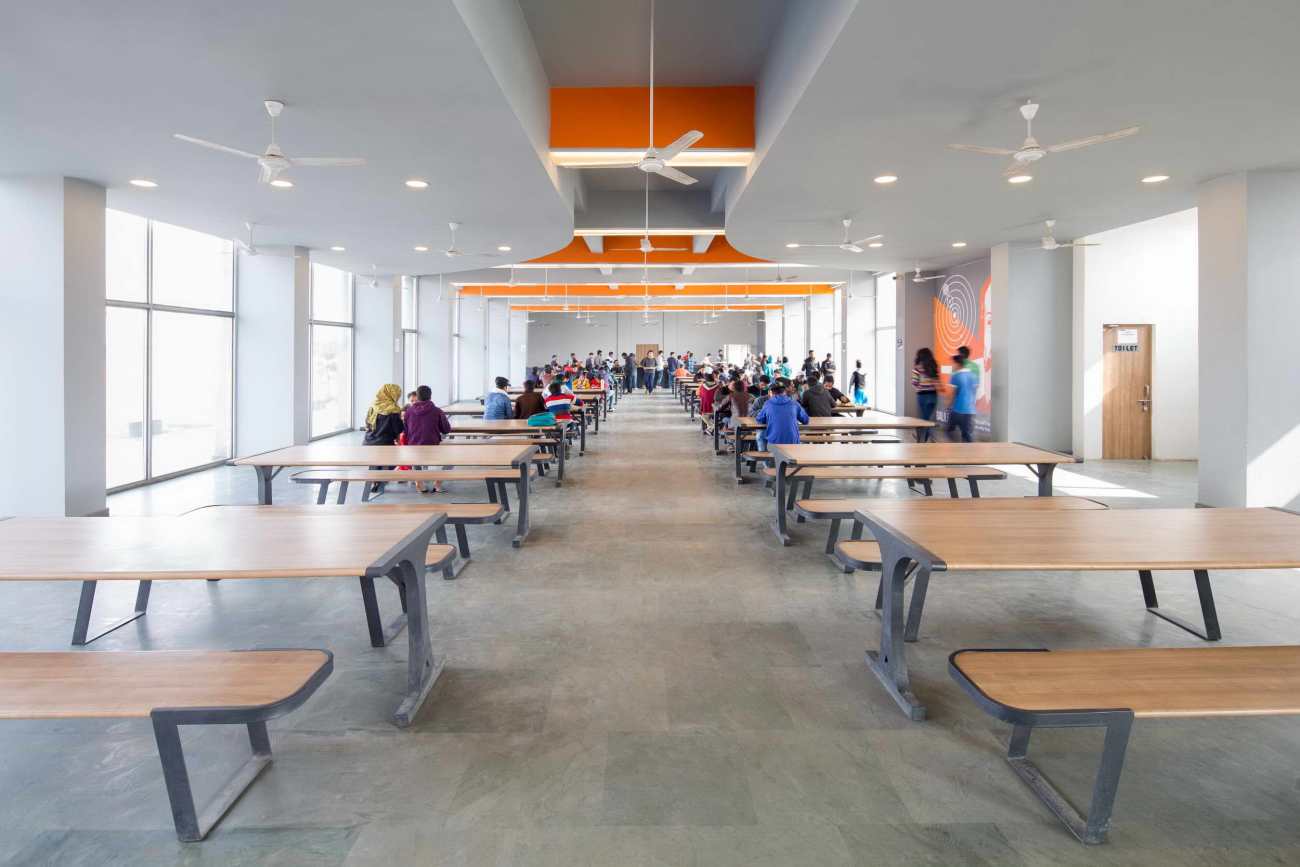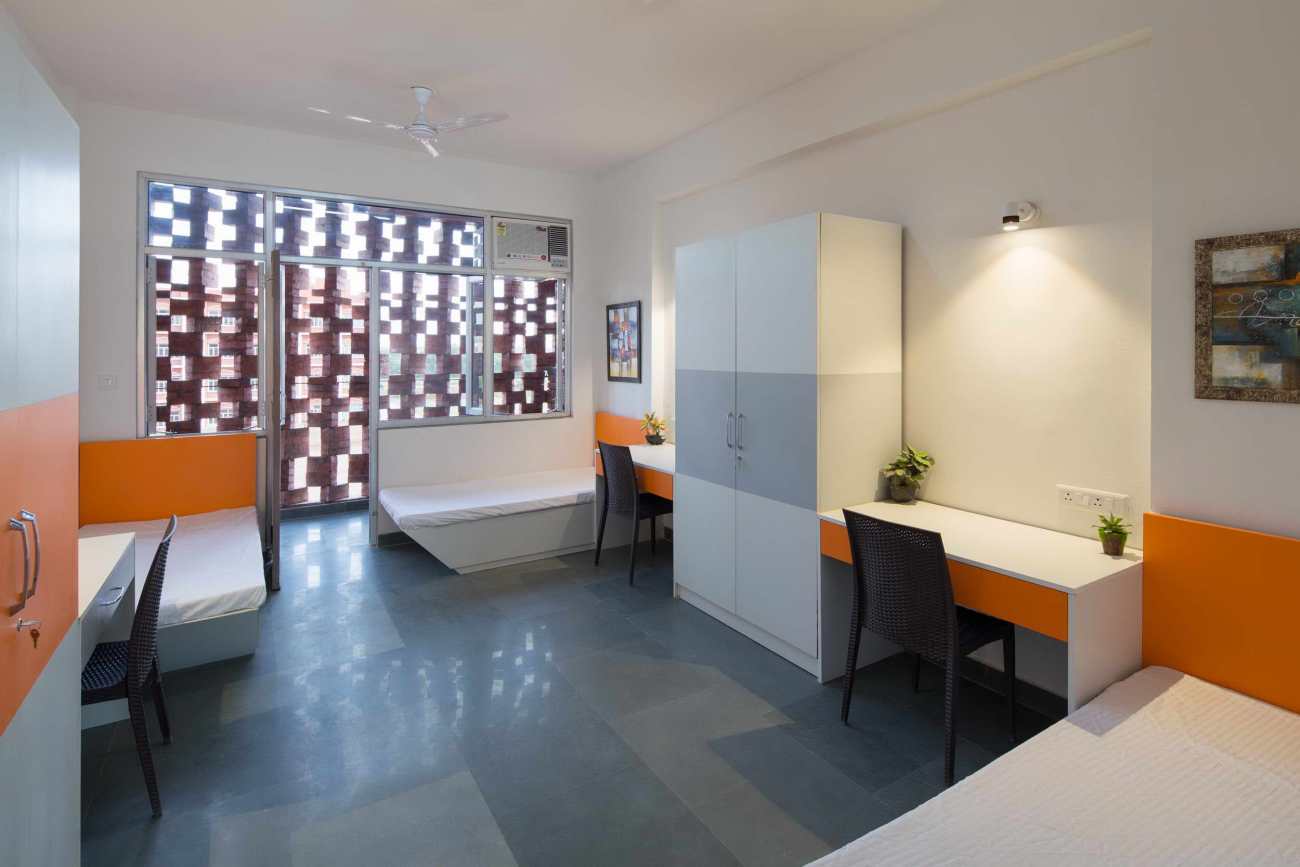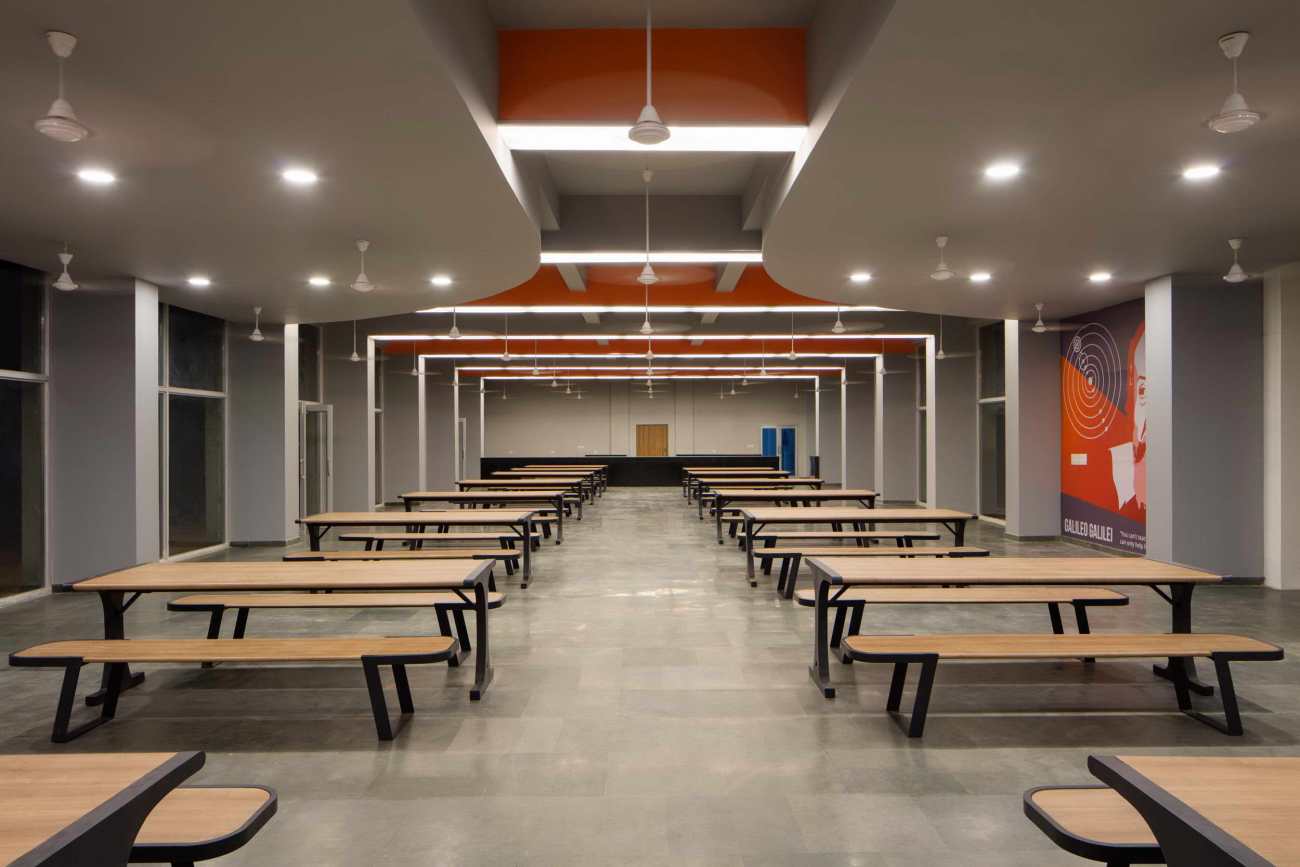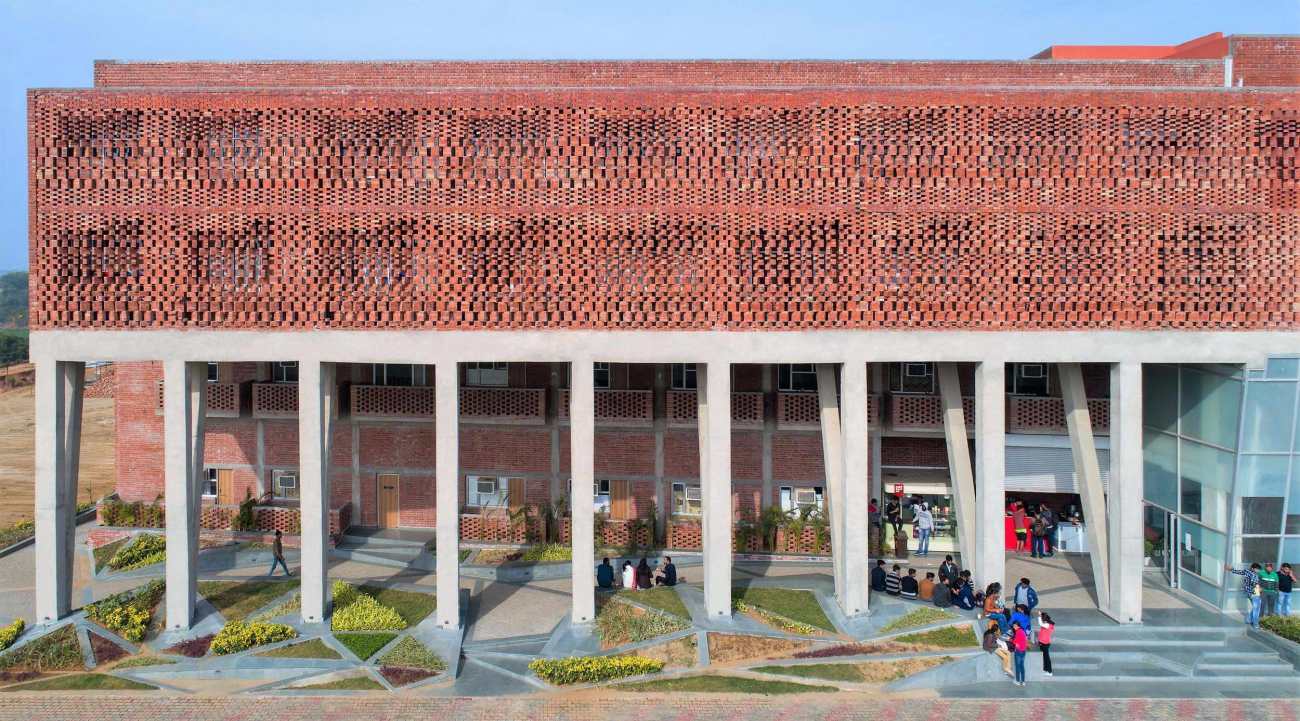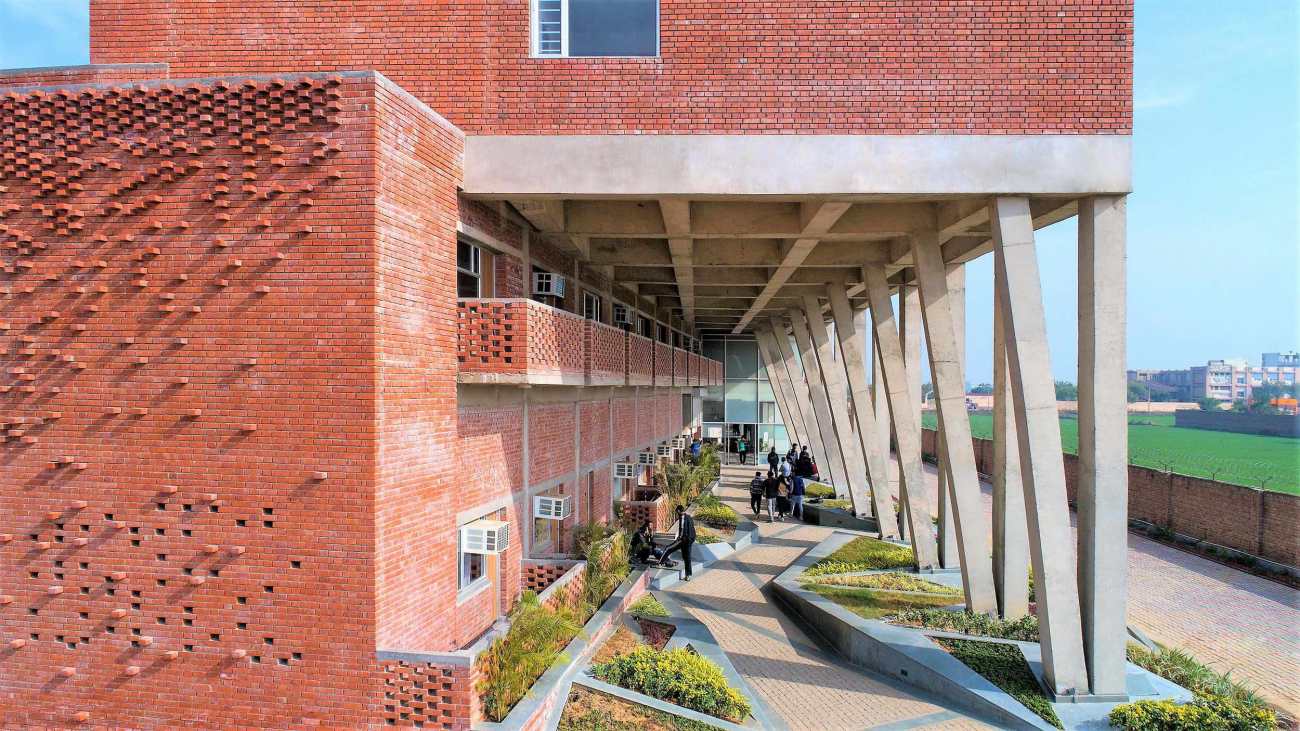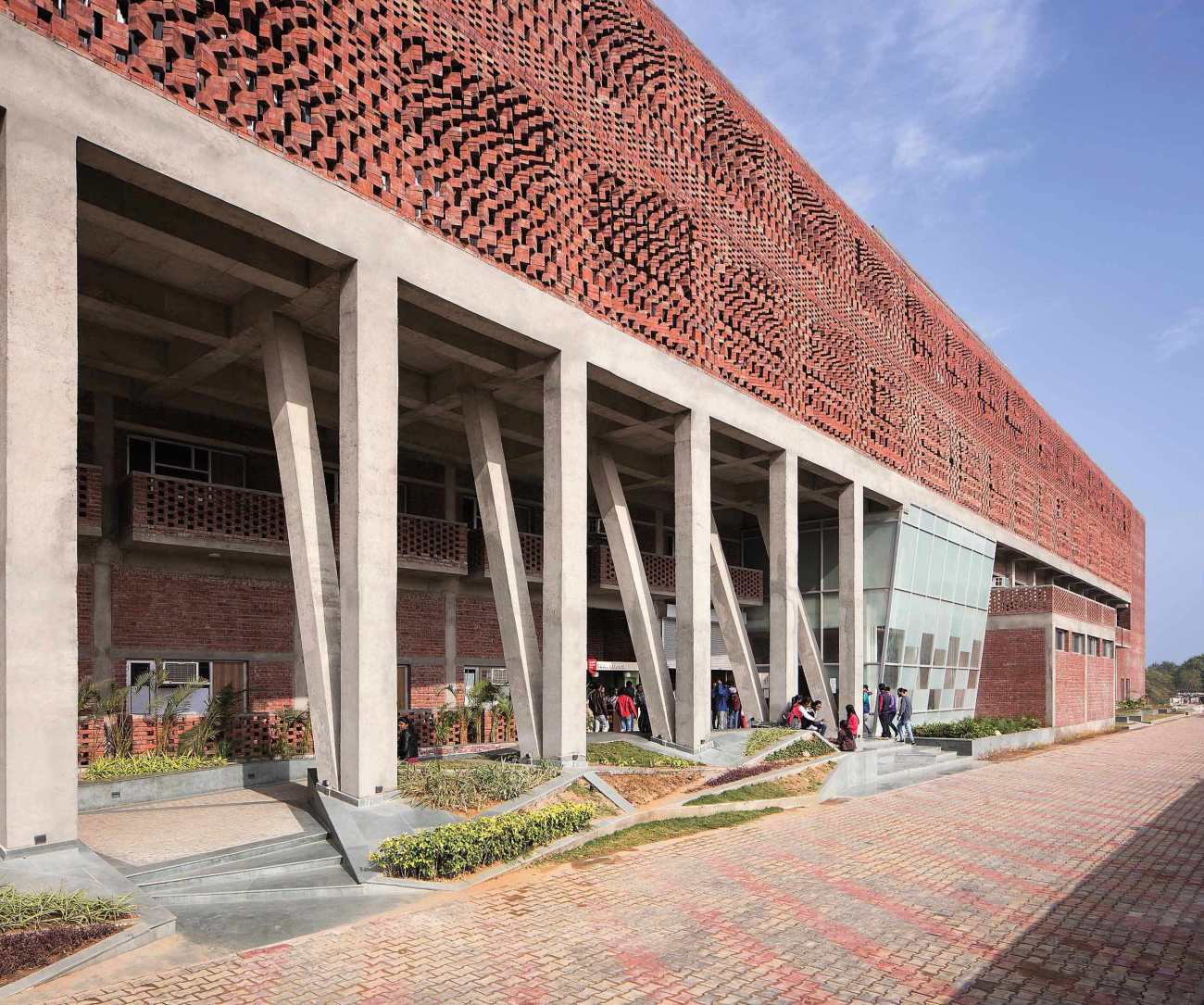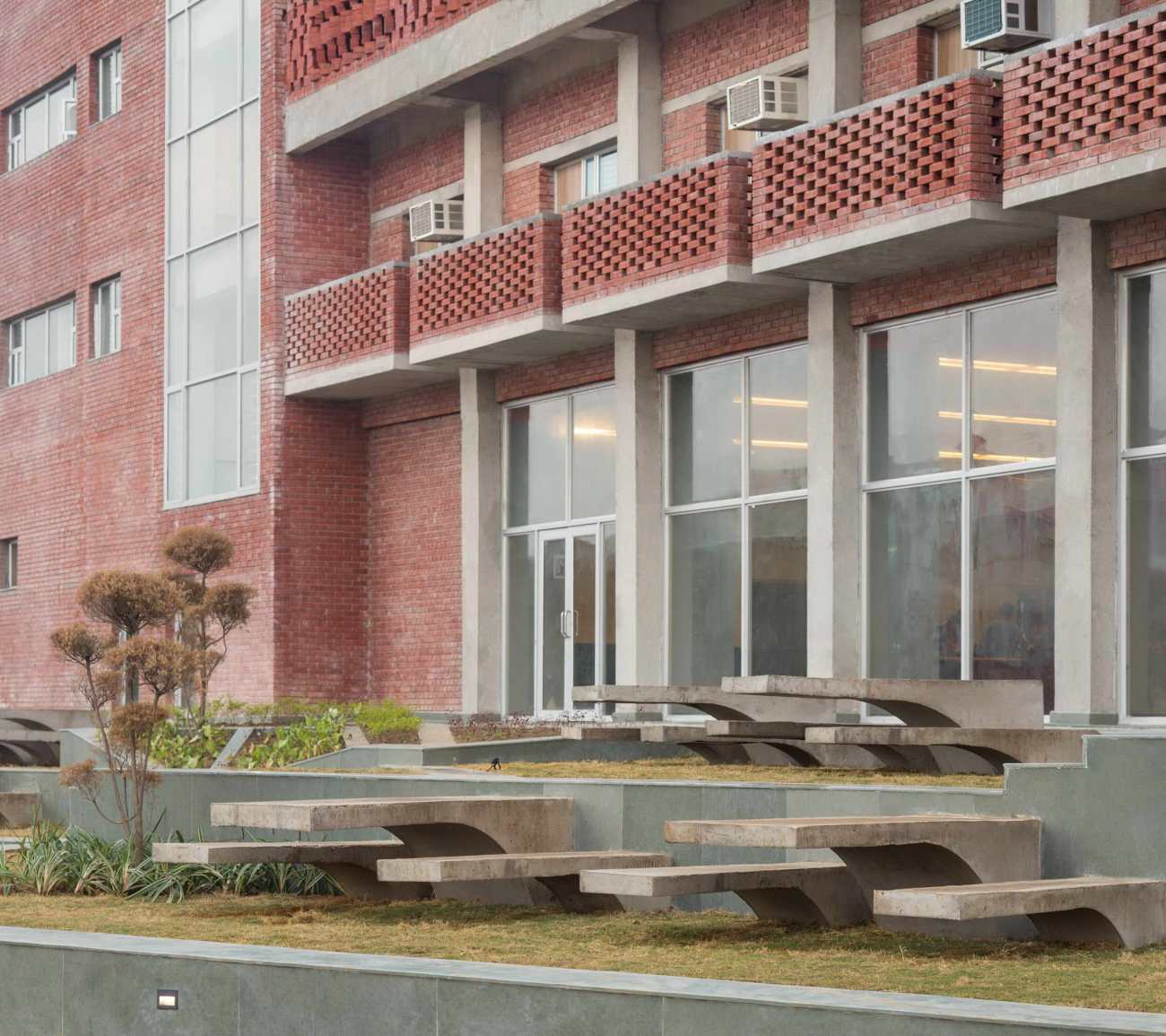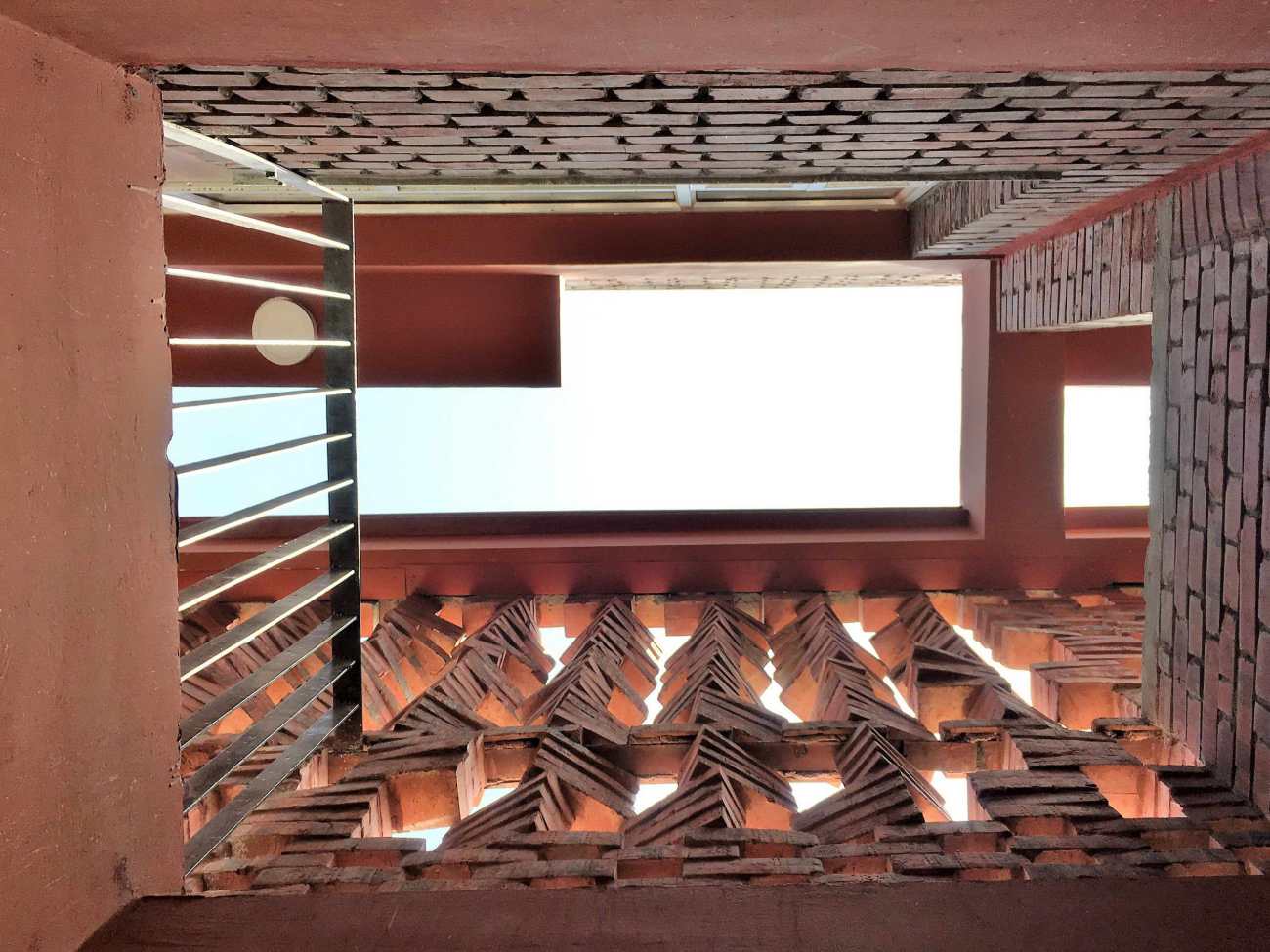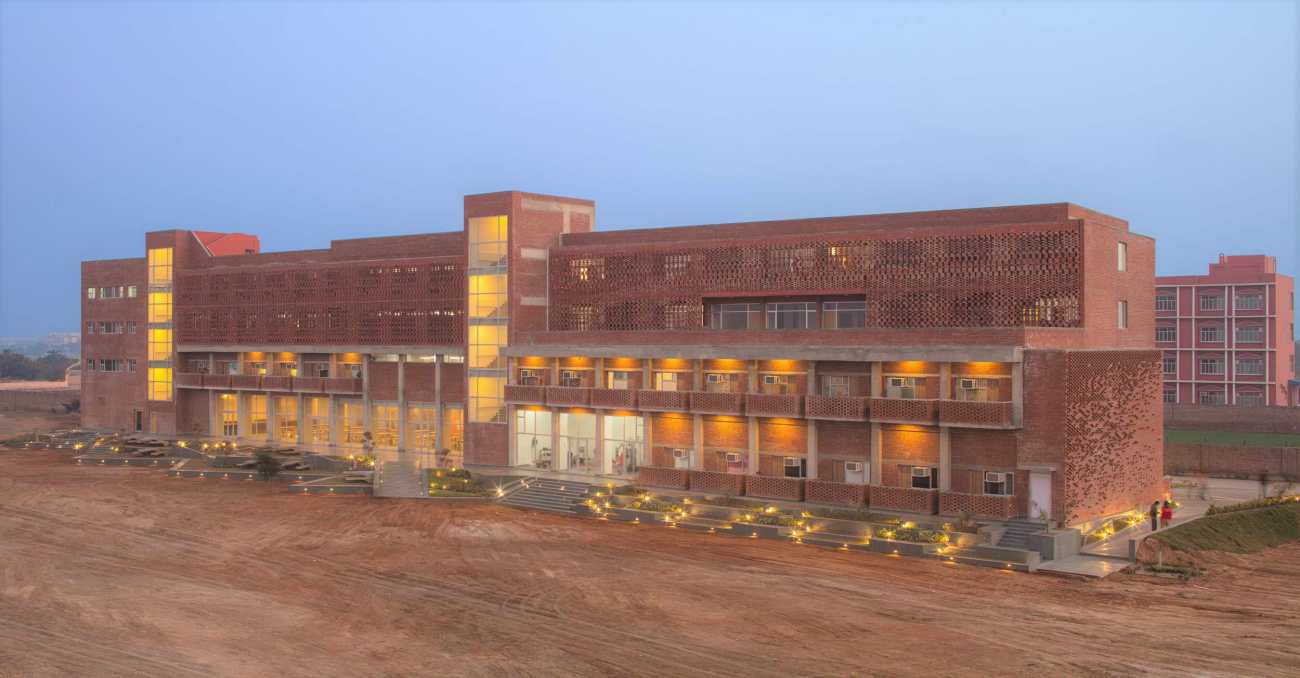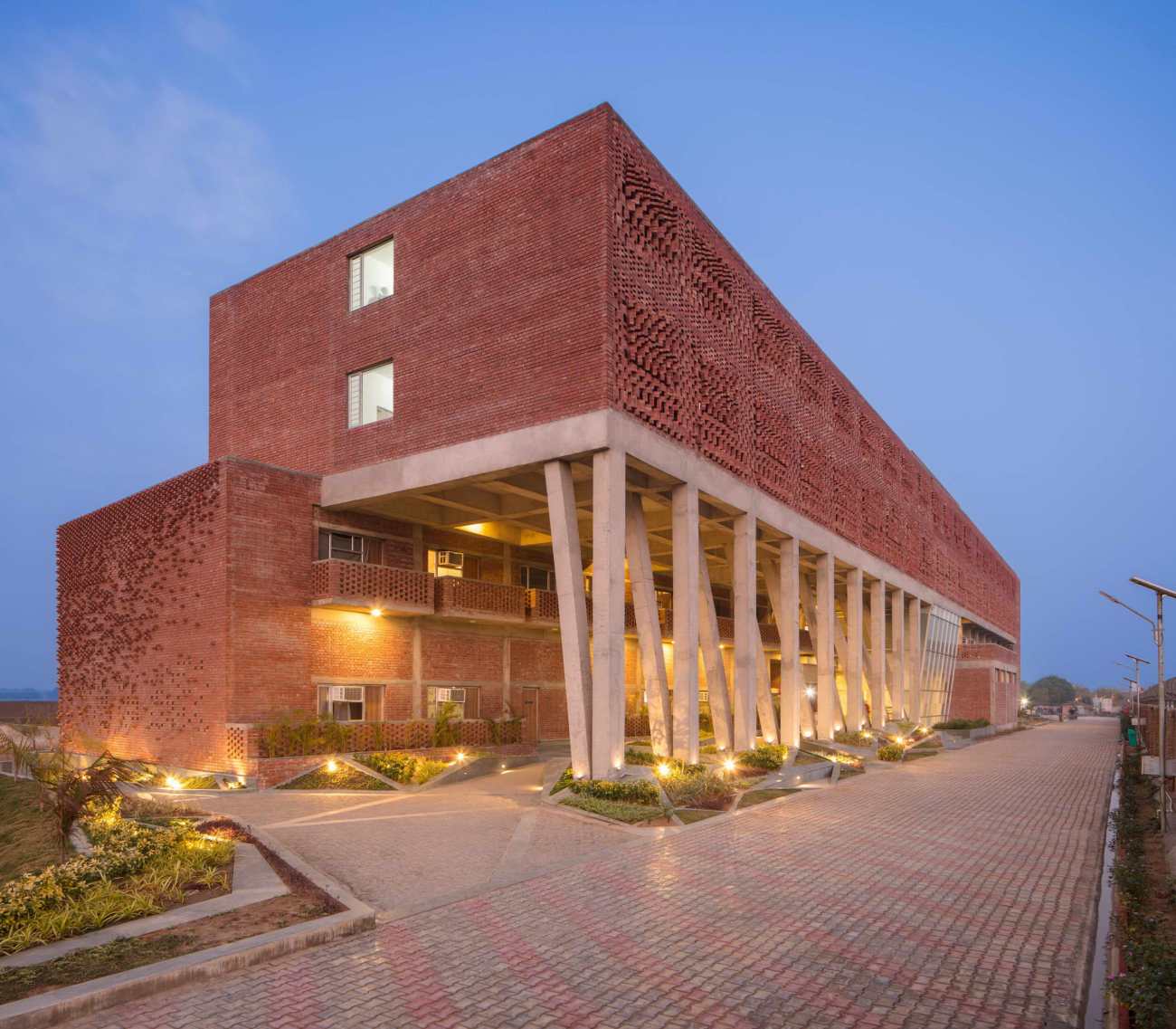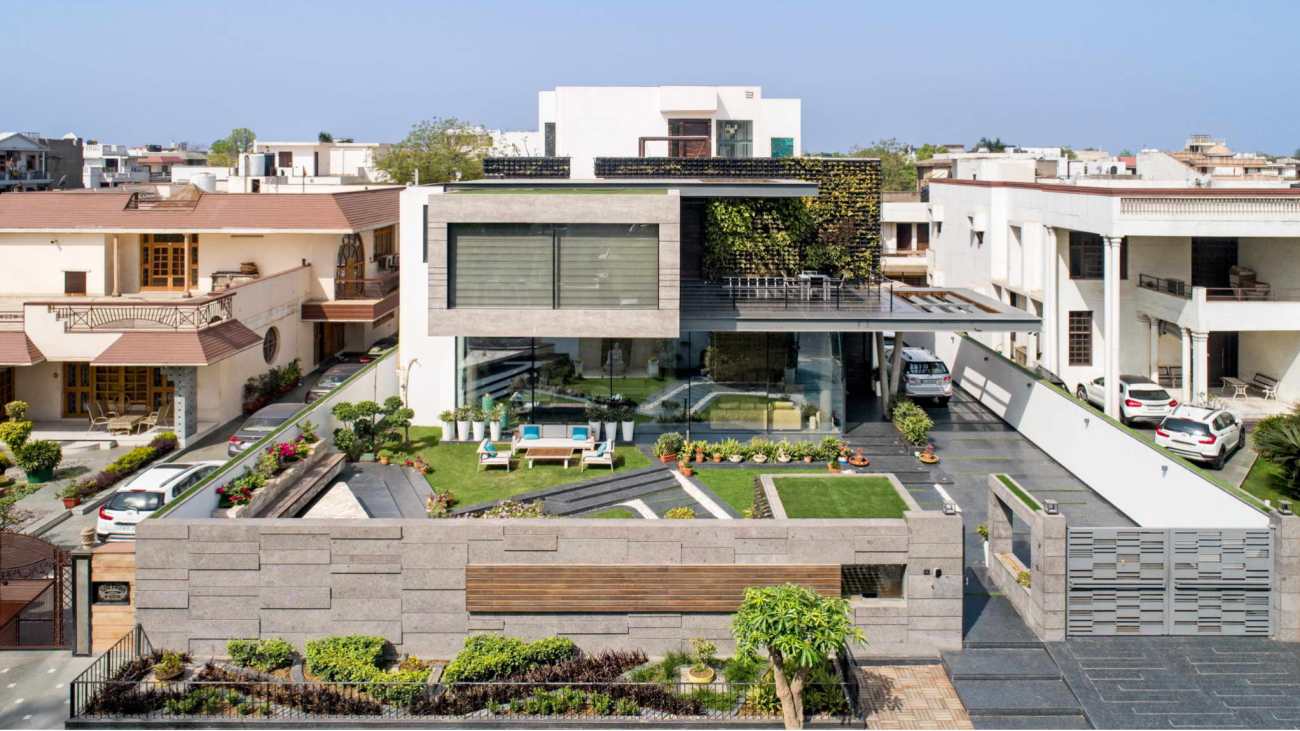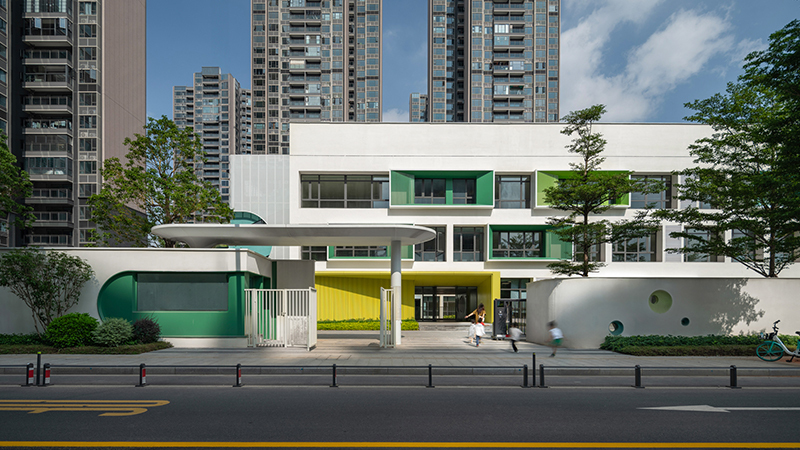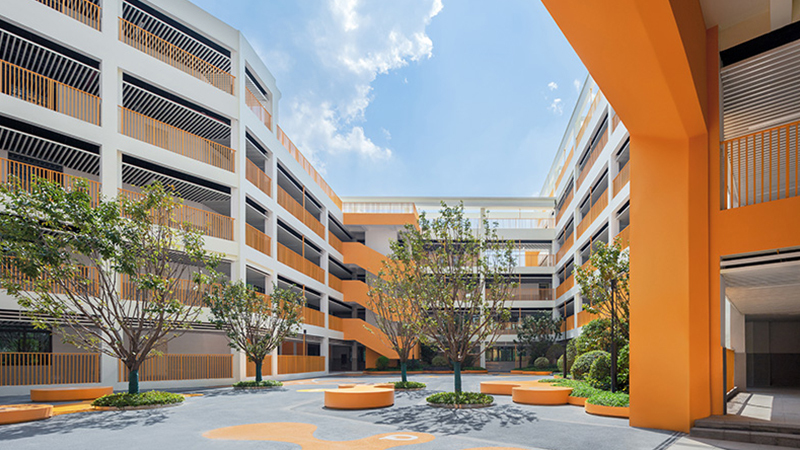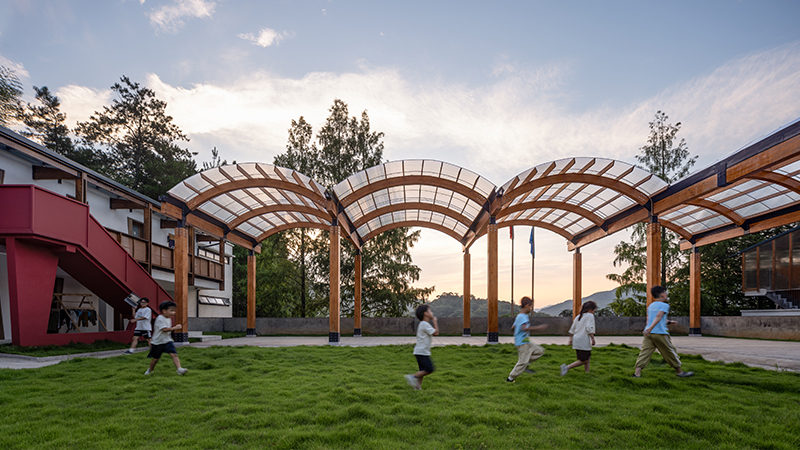| 公司: | Zero Energy Design Lab | 类型: | 建筑 |
|---|---|---|---|
| 地区: | 印度 | 标签: | 学校 |
由ZED Lab设计的圣安德鲁斯技术与管理学院的男生宿舍楼是一个精心设计的住宅综合体,其特点来自于基本的建筑模块--砖块。该建筑保持了强烈的水平感,并利用了一个克制的材料色调,包括在外立面坚固的支撑结构中暴露的清水混凝土。宿舍楼的设计创造了一种社区感,反映了大学建筑的现代性。它包含了一系列流畅的社会功能和环境可持续发展的空间。
The boys' hostel building at the St. Andrews Institute of Technology and Management by ZED Lab is a meticulously designed, well-engineered residential complex that obtains its character from the basic building block – the brick. The building maintains a strong horizontal emphasis and utilizes a restrained material palette consisting of fair-faced concrete exposed in the robust supporting structure in the façade. The design of the hostel block creates a sense of community and reflects the contemporary nature of the university buildings. It houses a fluid sequence of socially functional and environmentally sustainable spaces.
规划和设计策略
男生宿舍楼用与当今时代和技术相关的理念重新诠释了印度乡土建筑。预计到学生与空间、周围的景观以及他们之间互动的重要性,银河系的室内空间是外部的设计延伸。建筑内部的分层规划与被动式设计策略促进了学生之间的舒适交流。弯曲的中央中庭让自然光深入建筑内部。同时,它也是一个太阳能烟囱,通过叠加效应,带走建筑内的陈旧和热空气。大厦可容纳360名学生的住宅单元,并配有娱乐场和食堂设施。三层高的宽敞宿舍脱离了传统的宿舍风格,为学生提供了更高的用户体验和更广阔的户外视野。
Planning and Design Strategies
The boys’ hostel building reinterprets Indian vernacular architecture with ideas relevant to the present times and techniques. Anticipating the importance of student interaction with the spaces, the landscape around and amongst themselves, the galactic indoor spaces are design extensions of the exteriors. The layered interior planning of the building with passive design strategies facilitates comfortable intercommunication amongst the students. The contorted central atrium allows natural light to penetrate deeper into the building. It also acts as a solar chimney that takes away the stale and hot air within the building through the stack effect. The block accommodates residential units for 360 students with inclusive recreational courts and mess facilities. The triple height spacious dorms depart from the conventional style of dorms, providing an enhanced user experience and a more expansive view of the outdoors to the students.
部分底层的倾斜体量与一层的线性造型相结合,分别在南面和北面形成了一个阴凉的入口(夏季庭院)和一个开放的露台(冬季庭院)。互动式的构图构成了街区的社交中心,为学生们创造了一个又去的体验空间,让他们不时地参与讨论与社交。
The combination of the angled volume of the part ground floor and the linear shape of the first floor creates a shaded entrance (summer court) and an open terrace (winter court) on the south and north facades respectively. The interactive composition forms the social heart of the block, creating a stimulating experiential space for students to engage in discussions, socialize or withdraw from time to time.
位于夏日球场内的景观坡道作为严酷的室外与轻松的室内之间的过渡空间,保护学生免受热浪的冲击。这条坡道通向采光充足的食堂,强化了学校注重为学生提供大尺度的交流空间。
The landscaped ramp located within the summer court acts as a transition space between the harsh outdoor and relaxed indoors protecting students from getting a thermal shock. This ramp leads to the light-filled cafeteria reinforcing the university's focus on generous spaces for students to interact at a larger scale.
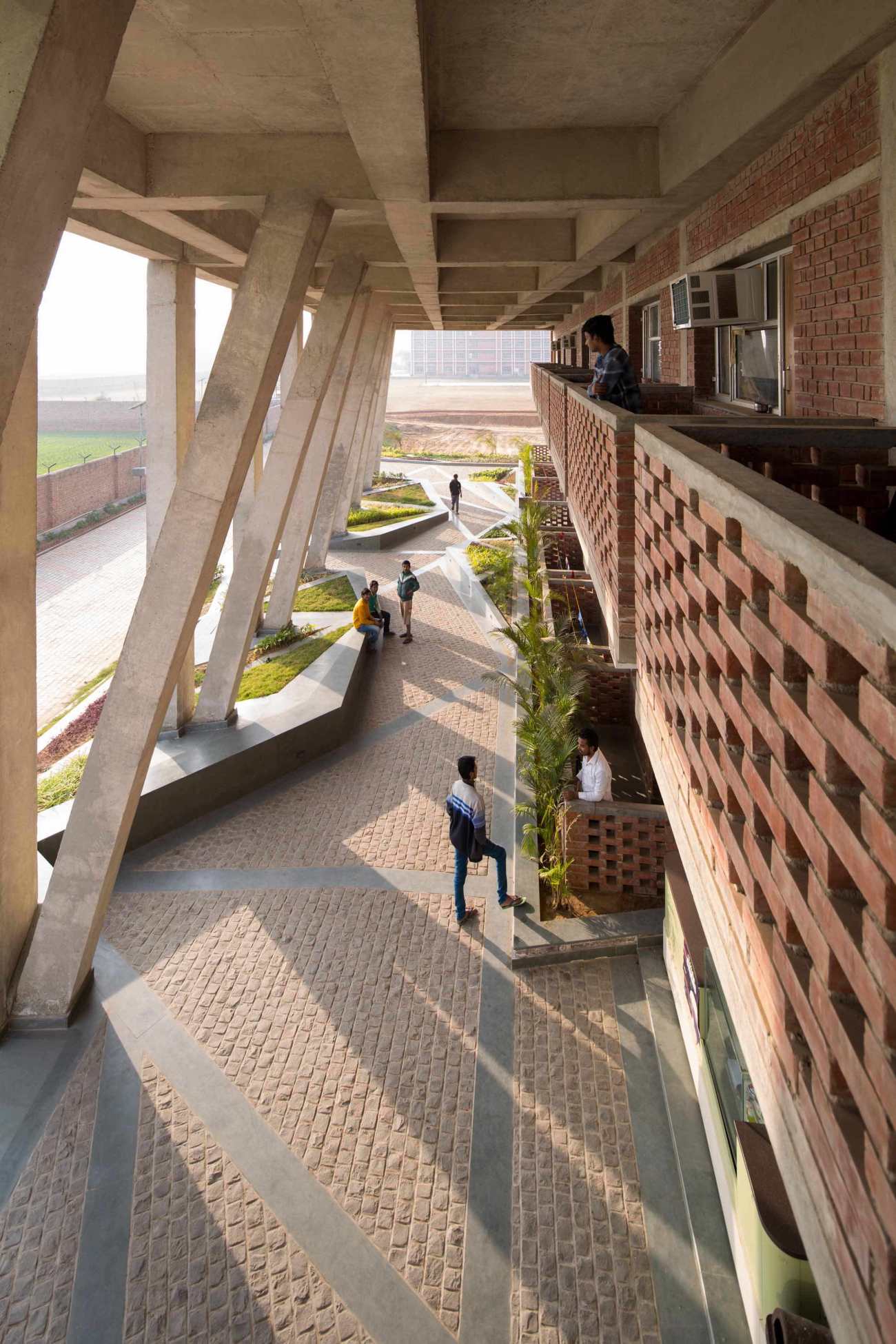 | 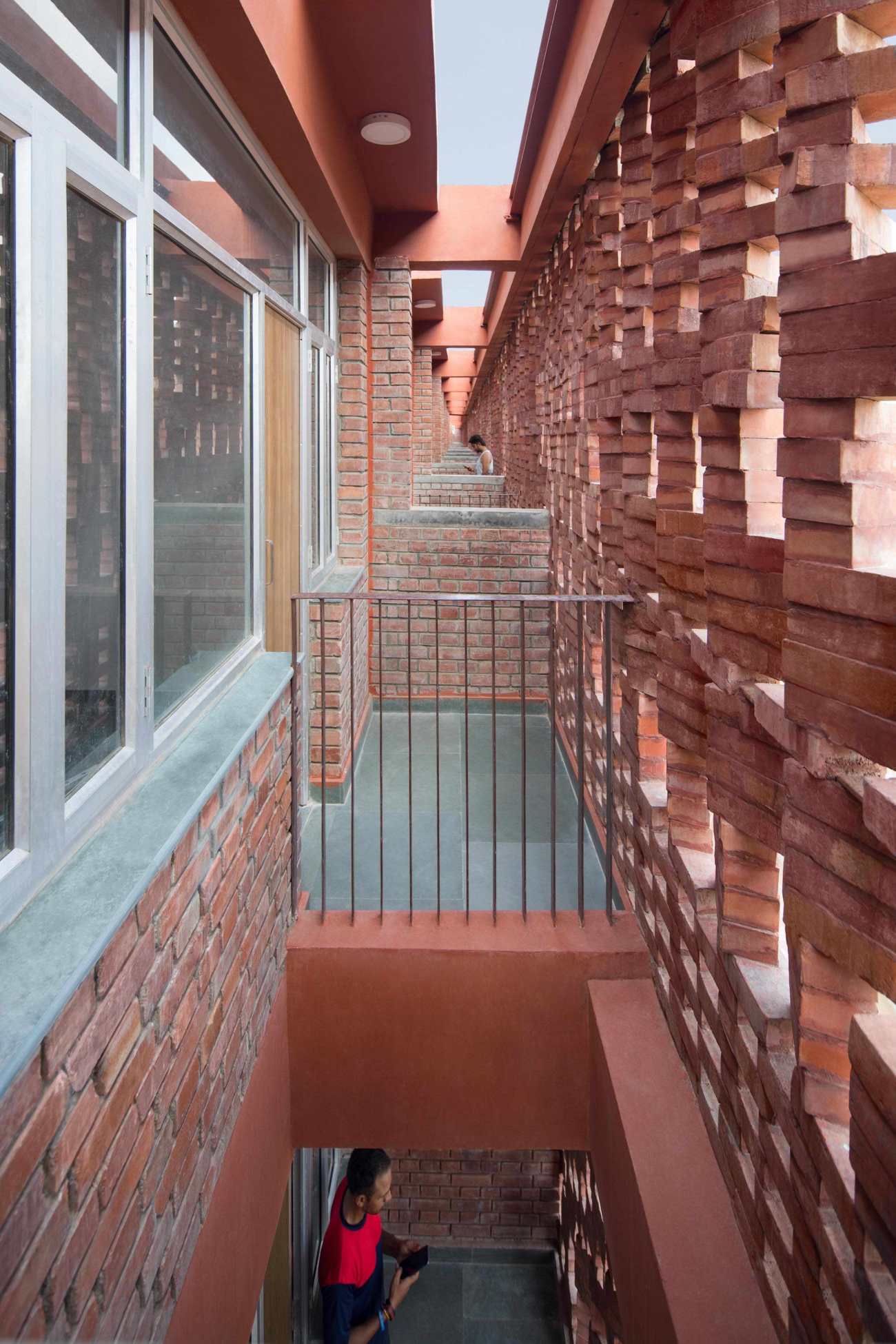 |
The serendipitous creation of the winter court on the first floor in the north direction enables one to enjoy the weather during a summer evening and winter afternoons. The terrace overlooks the playing field and establishes a visual dialogue with the overall context of the campus’s greenery and other buildings.
施工方法:创新
在ZED Lab,我们相信可持续发展与设计是分不开的。我们的团队致力于设计可持续的干预措施,将其作为增强建筑环境体验的不可缺少的组成部分。因此,建筑的朝向、材料和宿舍区的空间创造等因素都是通过综合研究,根据气候条件、太阳路径分析和空气流动而得出的。建筑的砖砌围护结构利用Ecotek、Grasshopper、Ladybird和Rhino等软件技术创造了一个可持续发展的设计叙事。
Construction Methodology: Innovation
At ZED Lab, we believe that sustainability is not separate from design. Our teams thrive to design sustainable interventions as indispensable components that enhance the experience of the built environment. Therefore, factors such as the orientation of the building, materiality and creation of spaces in the hostel block derive existence through comprehensive research, based on climatic conditions, sun path analysis and air movement. The brick envelope of the building harnesses software technology such as Ecotek, Grasshopper, Ladybird and Rhino to create a sustainable design narrative.
软件技术和计算研究的使用与砖砌围护结构的设计息息相关,为建筑提供隔热和漫射自然光。模拟或参数化脚本设计使用软件和结论从气候条件的分析讨论了现有的辐射和适当的辐射量,应通过外墙进入。后来运行在每块砖的模拟,我们得出了一个组成,包括安排/层砖旋转,然后在定期放置。
The use of software technology and computational studies is pertinent to the design of the brick jaali that circumscribes the building, providing thermal insulation and ingress of diffused natural light. The simulations or the parametric scripts designed using softwares and conclusions drawn from the analysis of climatic conditions discussed the existing radiation and the appropriate amount of radiation that should enter through the façade. Later running the simulations on each brick, we derived a composition that comprises arrangements/layers of bricks rotated and then placed at regular intervals.
Jaali外墙有1 英寸厚的钢筋固定在R.C.C梁使用Hilti化学品。为了保持砖块的排列,单片钢筋穿透定制的砖块制造的孔,没有水泥砂浆用于建设21英尺长的围墙。
The jaali façade has 1" thick steel bars fixed on R.C.C beams using Hilti chemicals. To hold the brick arrangement, a single piece steel bar pierces through the customized bricks manufactured with holes, no cement mortar used to construct the 21 feet long jali envelope.
目前,Jaali型材和它的组成是必不可少的因素,减少70%的直接辐射的热能,从而提供舒适的居住空间。然而,Jaali也提供了相当于250勒克斯的日光水平的宿舍。位于砖皮内的阳台宽度为4英尺。阳台或室内和室外空间之间的缓冲区,全年控制建筑的平均温度。
Presently, the jaali profile and its composition are essential factors that reduce the heat energy of direct radiations by 70%, thus providing comfortable habitable spaces. However, the jaali also provides daylighting levels in the dorms equal to 250 lux. The balconies located within the brick skin are 4 feet wide. The balconies or the buffer zones between indoor and outdoor spaces control the mean temperature of the building throughout the year.
▽剖面图 Section
▽分析图 Analysis sheet
Name of Project: St. Andrews Institute of Technology and Management – Boys’ Hostel Block
Typology: Commercial design/ Housing – Hostel
Location: Gurugram, Haryana
Name of Client: St. Andrews Group
Name of Client’s Firm: St. Andrews Group
Principal Architect: Zero Energy Design Lab
Design Team: Sachin Rastogi and Payal Seth Rastogi
Site Area (sqft & sq m): 60,700 sq. m
Built-Up Area (sqft&sq m): 60,000 Sq. Ft.
Start Date: Dec 2015
Completion Date: 2017
Photographer: Studio Noughts and Crosses | Andre J. Fanthome
更新日期:2021-01-15 17:07:40
非常感谢 Zero Energy Design Lab 带来的精彩项目, 查阅更多Appreciations towards Zero Energy Design Lab for sharing wonderful work on hhlloo. Click to see more works!
